The Australian Defence Force (ADF) defines operational art as “the skilful employment of military forces to attain strategic goals through the design, organisation, sequencing and direction of campaigns and major operations”.[1] By employing operational art as a bridge between tactical actions and overarching strategic objectives, military planners aim to coordinate and direct a series of operations towards an overarching campaign end-state. Specifically, operational art requires practitioners to optimise the operational elements of time, space, and means to generate strategic effects.[2] As such, rather than striving blindly for rapid tactical victories, military commanders should display patience and strategic clarity to strike the adversary at the correct time and speed, place and domain, and with the correct force configuration. Western militaries’ desire for decisive battles has contradicted and supported operational art at different times, depending on whether the decisive effects contributed to strategic aims by optimising these time, space, and means elements.
First World War (WWI)
In WWI, Germany failed to learn from its early mistakes in neglecting operational art, and continued pursuing tactical victories that worsened its strategic circumstances. At the war’s outbreak in August 1914, Germany pursued a policy of decisive victory and achieved multiple rapid victories against the Allies in the Battle of the Frontiers.[3] While the victories were a tactical success, they failed to advance Germany’s strategic objectives by mishandling the space and means operational elements. First, the failure to capture the strategic location of Paris meant that France’s war-fighting nucleus could continue waging war against Germany. Second, the resort to trench warfare at the Western Front and concurrent campaign against Russia in the East forced Germany into a prolonged two-front war, eventually exhausting German means to sustain war against the better-resourced Allies. In the late stages of WWI, Germany continued pursuing decisive battles that exacerbated its losses and counteracted its strategic objectives. During the 1918 Spring Offensive, Erich Ludendorff, the German Quartermaster-General, displayed a lack of operational art when he pushed for a series of “go for broke” offensives[4] that gave Germany more ground than the Allies gained in the entire war. However, this vast space of operations exposed Germany to strategically unsustainable lines of communication and further strained its depleting means, thereby exacerbating materiel and manpower shortages at the frontlines. Arguably, the subsumption of German civil government under the military[5] meant that there was no superior entity to set national strategy or verify that operational art was applied by the military to meet those higher objectives. Hence, from the start to the end of WWI, Germany failed to master the space and means of decisive battles to align them to operational art.
Conversely, the Allies’ decisive battles in 1918 complied with operational art’s principle of supporting strategic objectives, and contributed to Allied victory in WWI. During the Battle of Amiens, the Allies successfully combined infantry and artillery elements to execute creeping barrages “with rapidity…and in short intervals”.[6] These rapid effects contributed towards Allied strategic objectives in multiple ways. First, the rapid victories surprised and disoriented German forces, preventing them from regrouping and accessing their reserves. Second, the decisive victories bought time for the Allies to expand their rail network and amass critical supplies and American troop reinforcements,[7] setting the foundation for the larger, final Allied offensives that would end WWI. Importantly, this intentional and creative sequencing of operations within a larger campaign reflects operational art’s emphasis that activities should be “appropriately ordered…[to] progress towards the desired end-state”.[8] Third, the repulsion of German forces from Amiens served to secure the areas of continental Europe that were closest to Britain, thereby advancing the strategic objective of protecting Britain from a German invasion. The Allies’ plans thus optimised the time, space, and means elements of operational art; they bided their time to secure strategic regions, and conducted major offensives only after amassing a superior force configuration. Supreme Commander Ferdinand Foch’s skilful application of operational art in 1918 contrasts with the Allies’ own deficiencies earlier in WWI. For example, Allied plans to rapidly capture the Somme in 1916 defied operational art and resulted in WWI’s deadliest operation, which stretched over five months. The battle’s timing and means were suboptimal as large portions of Allied forces originally intended for the attack had been diverted to fight the Germans concurrently at Verdun,[9] and the battle’s location space was insignificant as the Somme had no strategic relevance to WWI subsequently. The Allies’ improvement in employing decisive battles during WWI demonstrates that rapid fights can adhere to operational art and when they do, rapid victories can help win wars.
The 1960s
The American coalition in the Vietnam War failed to apply operational art to translate tactical victories into strategic success. First, American planners failed to recognise the war’s counterinsurgency character, which led them to oppose operational art by disregarding North Vietnam’s true Centres of Gravity (CoGs). Consequently, instead of targeting the Vietnamese people’s support for the Việt Cộng or the Ho Chi Minh Trail that sustained the North Vietnamese Army, military leaders pursued conventional battles that delivered rapid victories.[10] In these decisive battles, America further contradicted operational art by losing control of the information space and failing to safeguard its critical vulnerability of domestic support for the war. For instance, despite achieving rapid tactical victory in 1968’s Battle of Huế, widespread coverage on the North Vietnamese’s valiant assaults contradicted the single-sided victorious narrative that American politicians had fed the public until then.[11] Footage of devastation wreaked on human lives and heritage artefacts in the former Imperial capital further weakened public support for the war. Pervasive public discontent with the war’s conduct culminated in the early withdrawal of American troops from Vietnam,[12] thereby preventing strategic victory for the coalition. Additionally, the battle exposed the coalition’s deficiency in exploiting joint means to deliver rapid effects. For example, poor coordination between the services led to instances where American gunners and marines exchanged friendly fire while storming the city.[13] At the operational level, tri-service strike effects were not sequenced at mutually-supporting timings during the battle,[14] which unnecessarily lengthened the battle and increased casualties. Academics suggest that despite successfully synchronising joint operations towards victory in the Second World War, post-war competition for budget deepened divisions between the American services[15] and hampered joint integration in wielding operational art.
In contrast, Israel’s decisive victory in 1967’s Six-Day War provides a counterexample where joint effects were executed in a decisive battle to reinforce operational art. Despite fighting on multiple fronts, Israel simultaneously evicted Egyptian, Jordanian, and Syrian forces from disputed territories to achieve its strategic objectives of lifting Egypt’s naval blockade in the Straits of Tiran and nullifying the Arab threat to its survival.[16] Importantly, Israel planned for a short war and achieved precisely that with a decisive battle that incorporated operational art. First, Israeli fighter aircraft exploited space by striking critical locations like Arab airbases, surface-to-air missile sites, and supply depots,[17] thereby providing Israel with air supremacy and strategic control of the air throughout the war. Second, the decisive battle was supported by superior means. Israeli jets were rapidly refitted to execute four times as many attack waves as their adversaries,[18] which allowed Israel to immobilise all adversarial Air Forces on the first day alone. Additionally, Israel tapped on its reservists and amassed an Army larger than its opponents’ combined,[19] allowing its ground forces to rapidly overrun adversarial fortifications after air supremacy had been attained. Israel’s effective coordination of joint warfare within a single battlefield contrasts with the suboptimal service-centric means that America employed in Vietnam, as highlighted above. Third, the deliberate sequencing of air activities before ground operations represents Israeli mastery in timing operations within an overarching campaign. The resultant decisive effects contributed to another Israeli strategic objective – nullifying the Arab threat quickly so as to reduce the strain on the economy caused by recalling reservists from their jobs. Israel’s rapid victory mirrors their prior decisive success in 1956’s nine-day Sinai War, suggesting an Israeli tradition of harmonising decisive battles and operational art.
Turn of the Millennium
The Western coalition that initiated the 2003 Iraqi War deserted operational art after attaining a decisive victory, resulting in an unintended entanglement in Iraq until the present. In the initial phase, the coalition exemplified operational art during its 26-day invasion of Iraq. For the opening blow, the coalition effectively employed joint means consisting of rapid amphibious assaults and air strikes against strategic targets in space, such as command-and-control nodes, observation posts, and munitions sites.[20] Subsequently, under a time-coordinated “shock and awe” campaign, airborne and ground forces simultaneously invaded Northern and Southern Iraq respectively to occupy critical cities.[21] These coordinated effects provided the coalition with a decisive victory and rapidly attained its strategic objective of overthrowing Saddam Hussein’s regime. Concurrently, American President George W. Bush rightly recognised that the longer-term end-state of “freeing the Iraqi people”[22] would require significant manpower means over a sustained period of time. However, military leaders like U.S. Secretary of Defense Donald Rumsfeld contradicted operational art and strategic intent by resisting troop reinforcements, deciding instead to commence troop withdrawals immediately after the decisive victory. The premature withdrawal of coalition troops from the theatre resulted in insufficient forces to stabilise Iraq immediately after the war, entrapping Western militaries in two decades of security problems ranging from a civil war to multiple insurgencies that still persist today. Arguably, Western fixation on decisive battles contributed to the coalition’s mind-set that the war was over once it achieved military victory, resulting in its failure to prosecute operational art until peace had been established.
Conversely, the North Atlantic Treaty Organization (NATO) consistently applied operational art to achieve decisive victory and all its strategic end-states in 1999’s Kosovo War. NATO recognised that its strategic objectives in Kosovo were two-fold – compelling Yugoslav and Serbian forces to cease violence against Kosovar Albanians, and a longer-term political settlement in accordance with the Kosovar people’s will – and was “resolved to persevere” until both end-states had been attained.[23] In the decisive war, NATO employed air-centric means that avoided putting NATO boots on the ground, thus preventing casualties that could undermine support from member states. NATO originally targeted high-value military targets like air defence systems, but their dispersed and transient nature hampered the effectiveness of NATO’s air strikes.[24] NATO adapted rapidly and learnt to target Yugoslav industrial and infrastructural CoGs instead, which threatened the economic interests of Yugoslavia’s political elites and facilitated a climate of concession amongst them.[25] Furthermore, NATO’s ample resources allowed it to increase the volume of air bombardments over time, which convinced Yugoslav President Slobodan Milošević that complying with NATO was the only political and military solution out of the war. Critically, NATO continued practising operational art to attain political settlement even after Milošević’s surrender. NATO’s means of air bombardment persisted until Yugoslav and Serbian forces had fully withdrawn from Kosovo and the UN Interim Administration Mission had been established.[26] NATO also shaped the post-war political space by helping to establish the Kumanovo Agreement, which established air and ground safety zones surrounding Kosovo and facilitated the removal of military hazards like mines from battle zones. These post-victory efforts supported NATO’s strategic intent of political settlement and ushered relative peace in Kosovo over the next two decades, contrasting with the persistent unrest observed in Iraq.
Future Warfare
Looking ahead, protracted great power competition and increasingly complex battle-spaces compel Western militaries to adopt a long-term mentality for operational planning. Australia’s 2020 Defence Strategic Update identifies future conflict in the form of information, cyber, and grey-zone operations,[27] which share a protracted nature. First, information warfare entails winning hearts and minds by influencing potentially deep-seated perceptions, which would be a long-drawn endeavour. For example, Russia’s bloodless annexation of Crimea in 2014 was preceded by an extended information campaign to shape traditional and social media narratives, position pro-Russia agents in government agencies, and convert local militias to support Russian objectives.[28] Second, cyber-attacks often involve a lengthy preparatory operation to overcome an adversary’s defensive cyber capabilities and implant latent malware, well before an intended cyber battle. For example, the Stuxnet malware that disabled Iran’s uranium enrichment infrastructure took gradual effect across a few years,[29] so as to avoid detection. Third, grey-zone operations meant to provoke below the threshold of war tend to stretch over a long time. For example, China was careful to spread its destabilising actions of exerting its nine-dash line, reclaiming land on disputed territories, and deploying military platforms to South China Sea (SCS) islands across years to avoid provoking open conflict with other stakeholders. These examples suggest that rapid solutions will become more elusive in non-conventional warfare, and thus Western militaries should desert the decisive battle mentality and prioritise longer-term campaign planning for these forms of warfare. Arguably, the authoritarian establishments of Russia and China provide enduring institutional stability and far-sightedness to prosecute such warfare. In contrast, the frequent administration changes in Western democracies foster a culture of short-term planning to deliver decisive effects,[30] thereby stunting long-term planning. Within this context, career commanders in Western militaries provide continuity across administrations, and should continue advising policymakers to prioritise long-term objectives over decisive gains.
Furthermore, Western militaries’ application of operational art, such as via the ADF’s Joint Military Appreciation Process (JMAP), wrongly perpetuates an expectation of decisive victories. ADF doctrine acknowledges the difficulty in anticipating outcomes by describing modern operational environments as complex adaptive systems, in which interactive nodes and agents can respond in unpredictable ways.[31] Yet, in the practical interests of developing operational plans based on finite resources, JMAP erroneously forces a linear, cause-and-effect solution[32] to ill-structured and unpredictable situations. By establishing a clear path towards “success”, JMAP encourages planners to believe that they can control operational outcomes and perpetuates the mentality that decisive effects can be achieved as long as the operational plan is followed. However, the characteristics of modern warfare suggest that military solutions will neither be decisive nor straightforward. For example, mission analysis requires planners to identify the adversary, its CoG, and corresponding strategic end-states. However, state and non-state actors can conduct information and cyber operations covertly,[33] potentially obscuring the perpetrator’s identity, CoG, and objectives. Even in grey-zone operations where the instigator is known, the strategic end-states might be unclear. For example, China has intentionally remained ambiguous on its strategic end-state in the SCS, with Russia doing the same in Eastern Europe and the Middle East.[34] In such cases, JMAP requires Western planners to make potentially-inaccurate assumptions of non-Western actors that can derail operational plans. Even with multiple lines of operation, branches, and sequels to cater for alternative courses of action, JMAP is fundamentally a linear process[35] that assumes activities will progress in the order envisaged by planners. Consequently, while linear solutions might fit straightforward engagements like disaster relief operations that involve fewer assumptions, they can disintegrate quickly in conventional warfare against adversaries who are trying to out-manoeuvre their opponent at every turn.
Operational art thus needs to emphasise uncertainty and interactivity, rather than linearity, in order to address contemporary security challenges. First, operational planning tools, like JMAP, should incorporate system and human information modelling techniques[36] to augment planners’ situational understanding and improve their assessments of ambiguous situations. Milestone military courses should also include ambiguity training,[37] which encourages planners to think laterally to generate possibilities when tackling unpredictability. To create a culture where planners question flawed assumptions that can derail operations, leaders should recognise individuals who identify uncertainties and unjustified premises, rather than reward those who advocate solutions indiscriminately. During operational planning, instead of arranging all operational plans linearly, planning tools should allow networked, looped, or other frames that reflect real-world interactions and environmental complexities. During operations, commanders should revisit assumptions and assess progress religiously to validate the plan and its assumptions. After operations, planners should promulgate lessons on campaign planning’s utility and limitations through roadshows and workshops. By reflecting the inherent uncertainty and complexity in contemporary operational environments as much as possible, these measures can collectively elevate Western militaries’ application of operational art.
“2020 Defence Strategic Update.” Department of Defence, Australian Government, 2020.
Barber, Nicholas. “A Warning from the Crimea: Hybrid Warfare and the Challenge for the ADF.” Australian Defence Force Journal, no. 201 (2017): 46–58.
“British Army Report on the Military Situation in France, July 1918: Record Group WO 158/105.” United Kingdom National Archives, July 24, 1918.
Byman, Daniel L., and Matthew C. Waxman. “Kosovo and the Great Air Power Debate.” In Strategic Studies: A Reader, edited by Thomas G. Mahnken and Joseph A. Maiolo. Abingdon: Routledge Taylor & Francis Group, 2008.
Carver, Michael. “Conventional Warfare in the Nuclear Age.” In Makers of Modern Strategy: From Machiavelli to the Nuclear Age, edited by Peter Paret. Oxford: Oxford University Press, 1986.
Dibb, Paul. “The Return of Geography.” In New Directions in Strategic Thinking 2.0: ANU Strategic & Defence Studies Centre’s Golden Anniversary Conference Proceedings, edited by Russell W. Glenn. Canberra: ANU Press, 2018.
Ehteshami, Anoushiravan, and Raymond A. Hinnebusch. Syria and Iran: Middle Powers in a Penetrated Regional System. London: Routledge Taylor & Francis Group, 1997.
Harknett, Richard J., and Max Smeets. “Cyber Campaigns and Strategic Outcomes.” Journal of Strategic Studies Ahead of Publication (2020): 1–34.
Iasiello, Emilio J. “Innovations in Warfare & Strategy Russia’s Improved Information Operations: From Georgia to Crimea.” Parameters 47, no. 2 (Summer 2017): 51–63.
Karnow, Stanley. Vietnam: A History. New York: Viking, 1983.
Kuusisto, Tuija, Rauno Kuusisto, and Wolfgang Roehrig. “Situation Understanding for Operational Art in Cyber Operations.” European Conference on Cyber Warfare and Security Reading (July 2015): 169–78.
Lambeth, Benjamin S. “Operation Allied Force: Lessons for the Future.” RAND Corporation, 2001. https://www.rand.org/pubs/research_briefs/RB75.html#fn1.
“Memorandum from the Commanders-in-Chief Conference No. 2375: Record Group WO 158/105.” United Kingdom National Archives, July 24, 1918.
Miles, Wilfrid. Military Operations: France and Belgium 1916: 2nd July 1916 to the End of the Battles of the Somme. London: Macmillan, 1992.
Neville, Leigh. The SAS 1983-2014. Oxford: Osprey Publishing, 2016.
Newell, Clayton R., and Michael D. Krause, eds. On Operational Art. Washington, D.C.: Center for Military History, 1994.
Nourian, Arash, and Stuart Madnick. “A Systems Theoretic Approach to the Security Threats in Cyber Physical Systems Applied to Stuxnet.” IEEE Transactions on Dependable and Secure Computing 15, no. 1 (February 2018): 2–13.
Oberdorfer, Don. Tet!: The Turning Point in the Vietnam War. Baltimore: John Hopkins University Press, 2001.
“Operations Series: Campaigns and Operations, Australian Defence Doctrine Publication 3.0, Edition 2 AL1.” Defence Publishing Service, March 4, 2013.
Oren, Michael B. Six Days of War: June 1967 and the Making of the Modern Middle East. New York: Oxford University Press, 2002.
“Plans Series: Joint Military Appreciation Process, Australian Defence Force Procedures 5.0.1, Edition 2 AL3.” Defence Publishing Service, August 15, 2019.
“Plans Series: Joint Planning, Australian Defence Doctrine Publication 5.0, Edition 3.” Defence Publishing Service, July 24, 2018.
Pollack, Kenneth M. Arabs at War: Military Effectiveness, 1948-1991. Nebraska: University of Nebraska Press, 2004.
“President Discusses Beginning of Operation Iraqi Freedom.” The White House, March 22, 2003. https://georgewbush-whitehouse.archives.gov/news/releases/2003/03/20030322.html.
Saad, Lydia. “From Vietnam to Iraq: How Americans Have Rated the President.” Gallup, November 4, 2003. https://news.gallup.com/poll/9640/From-Vietnam-Iraq-How-Americans-Rated-President.aspx.
Scott, Trent. “The Lost Operational Art: Invigorating Campaigning into the Australian Defence Force.” Land Warfare Studies Centre, February 2011.
Showalter, Dennis E. “Total War for Limited Objectives: An Interpretation of German Grand Strategy.” In Grand Strategies in War and Peace, edited by Paul Kennedy. Connecticut: Yale University Press, 1991.
Shulimson, Jack, Leonard A. Blasiol, Charles R. Smith, and David A. Dawson. U.S. Marines in Vietnam: The Defining Year, 1968. Washington, D.C.: History and Museums Division, USMC, 1997.
Skinner, H. T., and H. FitzM. Stacke. History of the Great War: Principal Events 1914–1918. London: His Majesty’s Stationery Office, 1922.
“Statement by the North Atlantic Council on Kosovo.” NATO, January 30, 1999. https://www.nato.int/docu/pr/1999/p99-012e.htm.
Szászdi, Lajos F. Russian Civil-Military Relations and the Origins of the Second Chechen War. Maryland: University Press of America, Inc., 2008.
Tucker, Michael J., and Charles S. Faddis. Operation Hotel California: The Clandestine War Inside Iraq. Connecticut: Lyons Press, 2009.
Van Creveld, Martin, Kenneth S. Brower, and Steven L. Canby. Air Power and Maneuver Warfare. Alabama: Air University Press, 1994.
Warr, Nicholas. Phase Line Green: The Battle for Hue, 1968. Annapolis MD: Naval Institute Press, 2013.
Zabecki, David T. The Generals’ War : Operational Level Command on the Western Front In 1918. Indiana: Indiana University Press, 2018.
[1] “Operations Series: Campaigns and Operations, Australian Defence Doctrine Publication 3.0, Edition 2 AL1” (Defence Publishing Service, March 4, 2013), 1-15.
[2] David T. Zabecki, The Generals’ War : Operational Level Command on the Western Front In 1918 (Indiana: Indiana University Press, 2018), 91.
[3] H. T. Skinner and H. FitzM. Stacke, History of the Great War: Principal Events 1914–1918 (London: His Majesty’s Stationery Office, 1922), 7–8.
[4] Zabecki, The Generals’ War : Operational Level Command on the Western Front In 1918, 250.
[5] Dennis E. Showalter, “Total War for Limited Objectives: An Interpretation of German Grand Strategy,” in Grand Strategies in War and Peace, ed. Paul Kennedy (Connecticut: Yale University Press, 1991), 114–15.
[6] “Memorandum from the Commanders-in-Chief Conference No. 2375: Record Group WO 158/105” (United Kingdom National Archives, July 24, 1918).
[7] “British Army Report on the Military Situation in France, July 1918: Record Group WO 158/105” (United Kingdom National Archives, July 24, 1918).
[8] “Plans Series: Joint Planning, Australian Defence Doctrine Publication 5.0, Edition 3” (Defence Publishing Service, July 24, 2018), 2-1.
[9] Wilfrid Miles, Military Operations: France and Belgium 1916: 2nd July 1916 to the End of the Battles of the Somme (London: Macmillan, 1992), 86, 570–72.
[10] Stanley Karnow, Vietnam: A History (New York: Viking, 1983), 501.
[11] Don Oberdorfer, Tet!: The Turning Point in the Vietnam War (Baltimore: John Hopkins University Press, 2001), 251.
[12] Lydia Saad, “From Vietnam to Iraq: How Americans Have Rated the President” (Gallup, November 4, 2003), https://news.gallup.com/poll/9640/From-Vietnam-Iraq-How-Americans-Rated-President.aspx.
[13] Jack Shulimson et al., U.S. Marines in Vietnam: The Defining Year, 1968 (Washington, D.C.: History and Museums Division, USMC, 1997), 177–78.
[14] Warr, Phase Line Green: The Battle for Hue, 1968, xi.
[15] Clayton R. Newell and Michael D. Krause, eds., On Operational Art (Washington, D.C.: Center for Military History, 1994), 4.
[16] Martin Van Creveld, Kenneth S. Brower, and Steven L. Canby, Air Power and Maneuver Warfare (Alabama: Air University Press, 1994), 160.
[17] Michael Carver, “Conventional Warfare in the Nuclear Age,” in Makers of Modern Strategy: From Machiavelli to the Nuclear Age, ed. Peter Paret (Oxford: Oxford University Press, 1986), 792–94.
[18] Michael B. Oren, Six Days of War: June 1967 and the Making of the Modern Middle East (New York: Oxford University Press, 2002), 172.
[19] Kenneth M. Pollack, Arabs at War: Military Effectiveness, 1948-1991 (Nebraska: University of Nebraska Press, 2004), 294; Anoushiravan Ehteshami and Raymond A. Hinnebusch, Syria and Iran: Middle Powers in a Penetrated Regional System (London: Routledge Taylor & Francis Group, 1997), 76.
[20] Leigh Neville, The SAS 1983-2014 (Oxford: Osprey Publishing, 2016), 32–34.
[21] Michael J. Tucker and Charles S. Faddis, Operation Hotel California: The Clandestine War Inside Iraq (Connecticut: Lyons Press, 2009), 24–25.
[22] “President Discusses Beginning of Operation Iraqi Freedom” (The White House, March 22, 2003), https://georgewbush-whitehouse.archives.gov/news/releases/2003/03/20030322.html.
[23] “Statement by the North Atlantic Council on Kosovo” (NATO, January 30, 1999), https://www.nato.int/docu/pr/1999/p99-012e.htm.
[24] Benjamin S. Lambeth, “Operation Allied Force: Lessons for the Future” (RAND Corporation, 2001), https://www.rand.org/pubs/research_briefs/RB75.html#fn1.
[25] Daniel L. Byman and Matthew C. Waxman, “Kosovo and the Great Air Power Debate,” in Strategic Studies: A Reader, ed. Thomas G. Mahnken and Joseph A. Maiolo (Abingdon: Routledge Taylor & Francis Group, 2008), 163–65.
[26] Lajos F. Szászdi, Russian Civil-Military Relations and the Origins of the Second Chechen War (Maryland: University Press of America, Inc., 2008), 178.
[27] “2020 Defence Strategic Update” (Department of Defence, Australian Government, 2020), 5.
[28] Nicholas Barber, “A Warning from the Crimea: Hybrid Warfare and the Challenge for the ADF,” Australian Defence Force Journal, no. 201 (2017): 48.
[29] Arash Nourian and Stuart Madnick, “A Systems Theoretic Approach to the Security Threats in Cyber Physical Systems Applied to Stuxnet,” IEEE Transactions on Dependable and Secure Computing 15, no. 1 (February 2018): 5–6.
[30] Saad, “From Vietnam to Iraq: How Americans Have Rated the President.”
[31] “Plans Series: Joint Military Appreciation Process,” 2-11.
[32] “Plans Series: Joint Military Appreciation Process,” 1-1.
[33] Richard J. Harknett and Max Smeets, “Cyber Campaigns and Strategic Outcomes,” Journal of Strategic Studies Ahead of Publication (2020): 12.
[34] Paul Dibb, “The Return of Geography,” in New Directions in Strategic Thinking 2.0: ANU Strategic & Defence Studies Centre’s Golden Anniversary Conference Proceedings, ed. Russell W. Glenn (Canberra: ANU Press, 2018), 98–100; Emilio J. Iasiello, “Innovations in Warfare & Strategy Russia’s Improved Information Operations: From Georgia to Crimea,” Parameters 47, no. 2 (Summer 2017): 59.
[35] “Plans Series: Joint Military Appreciation Process,” 1-9.
[36] Tuija Kuusisto, Rauno Kuusisto, and Wolfgang Roehrig, “Situation Understanding for Operational Art in Cyber Operations,” European Conference on Cyber Warfare and Security (July 2015): 174.
[37] Trent Scott, “The Lost Operational Art: Invigorating Campaigning into the Australian Defence Force” (Land Warfare Studies Centre, February 2011), 30–31.
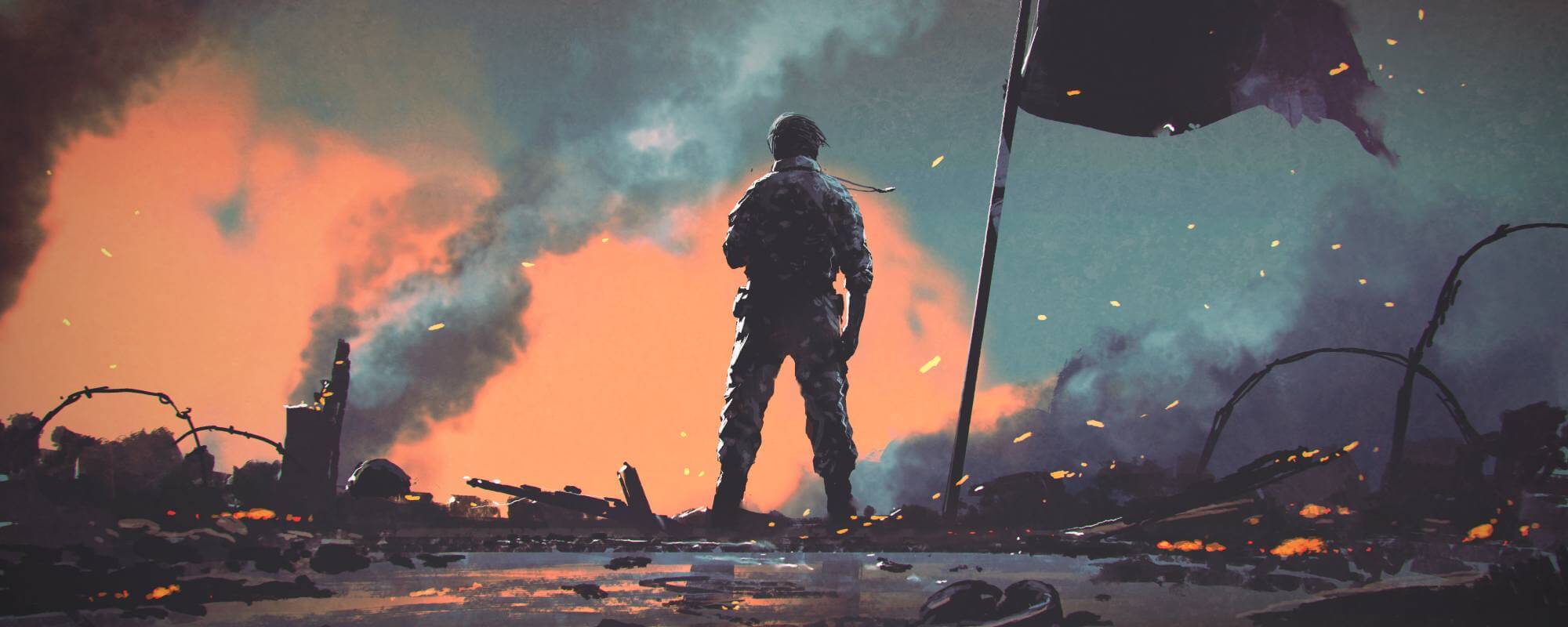

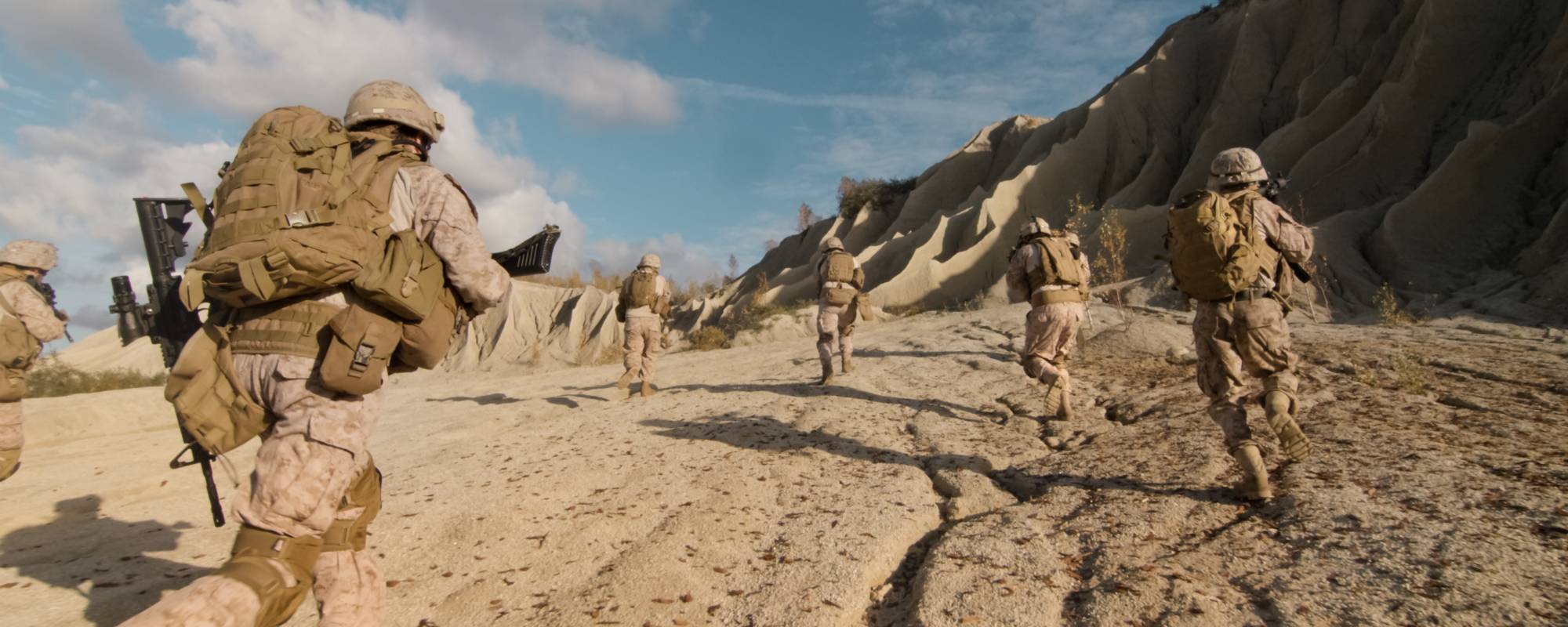
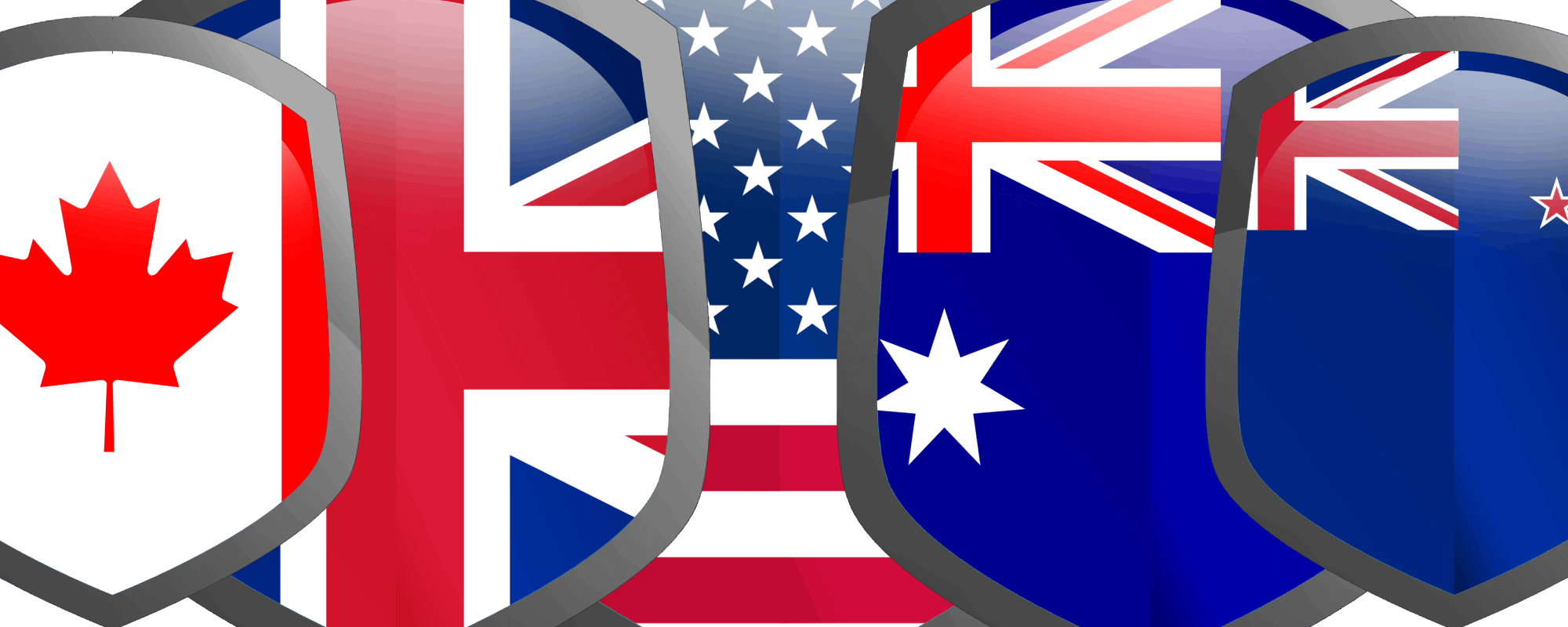



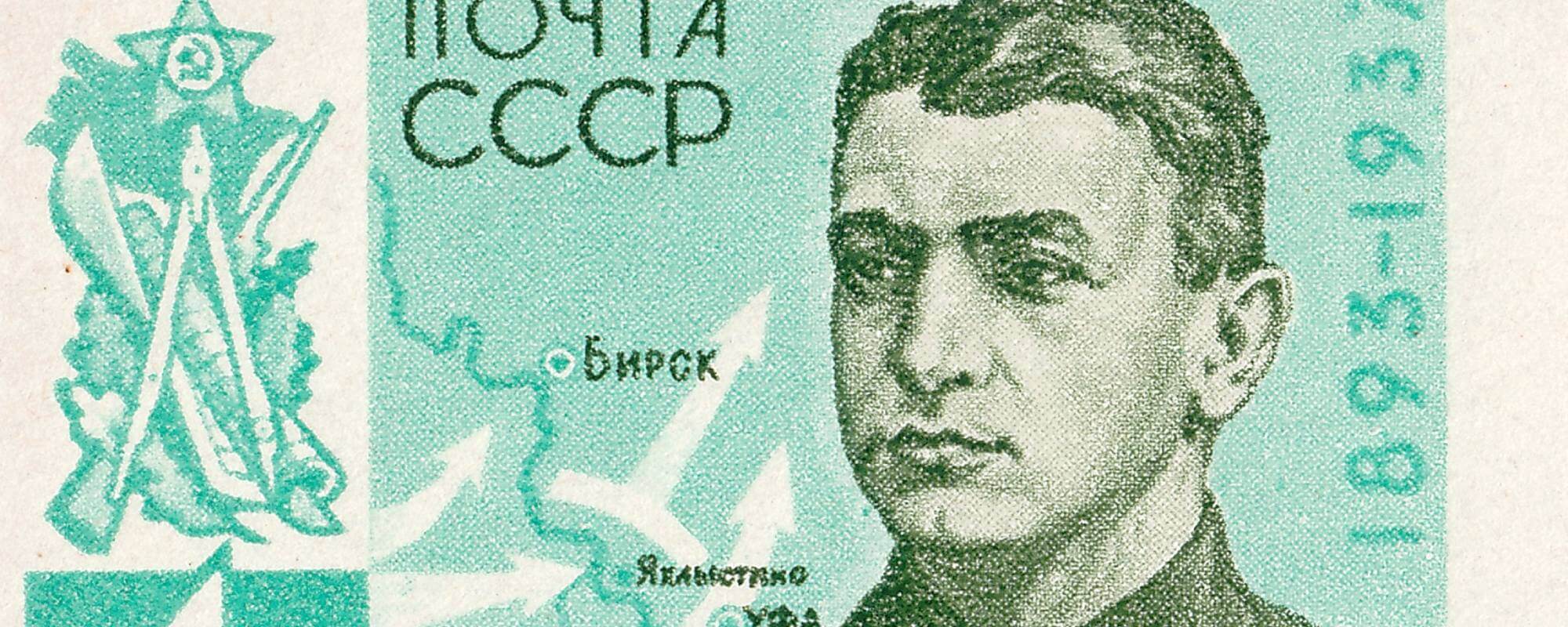
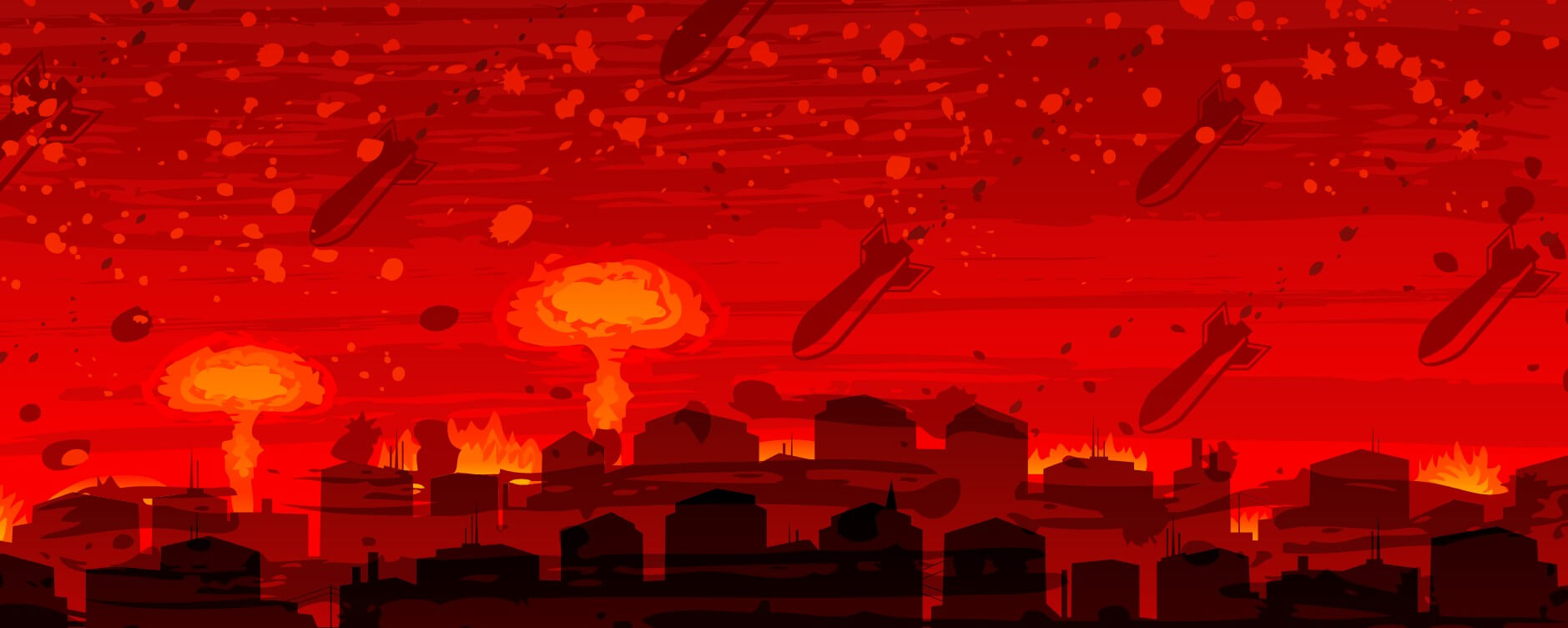

Comments
Start the conversation by sharing your thoughts! Please login to comment. If you don't yet have an account registration is quick and easy.